Modifying Scripts to Respond to Messages
When you create a script for an application, it is important to respond to message boxes that appear. For example, the Password Test Application displays the following message boxes:
- Login Successful
- Change Password Successful
- Login Failure
To ensure that SecureLogin responds appropriately to the message boxes, you need to include each message box in the application's script.
This section provides information on the following:
The information in this section uses Password Test Application as an example. However, the instructions apply to any Windows or Web application.
Modifying "Password Changed" Message Boxes
Many applications display a "password changed" message after the user changes a password. You can modify an application's script so that SecureLogin does the following:
- Clears the application's message.
- Updates credentials that SecureLogin has stored for the application.
- Displays your customized message.
-
Display the application's "password changed" message.

-
Right-click the SecureLogin icon on the task bar, then select Add Applications.
-
In the Welcome to SecureLogin dialog box, click Next.
-
Select Web Page or Windows Application (depending on your application), then click Next.
This example provides information on a Windows application.
-
In the Set Up a Windows Application dialog box, drag the hand icon to the application's title bar (not to the error message box).
-
Select Change Password Successful Message, then click Next.
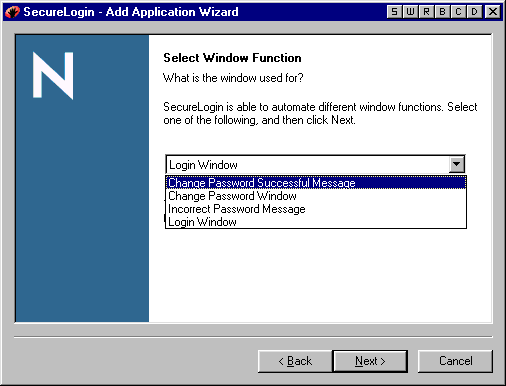
-
Drag the hand icons from the Wizard to the message text in the message box and to the OK button, then click Next.
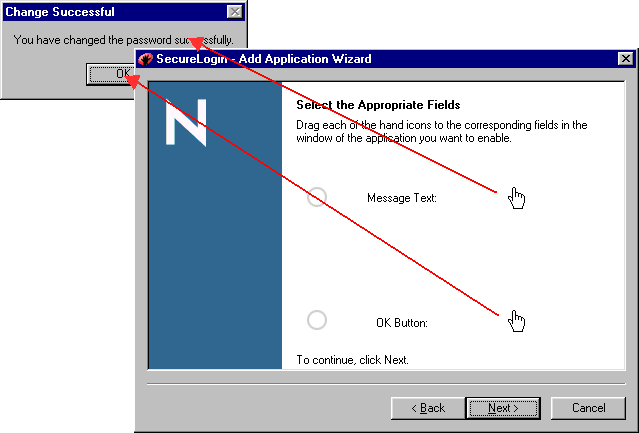
-
Modify the message by typing customized text in the Message Text edit box, then click Next.
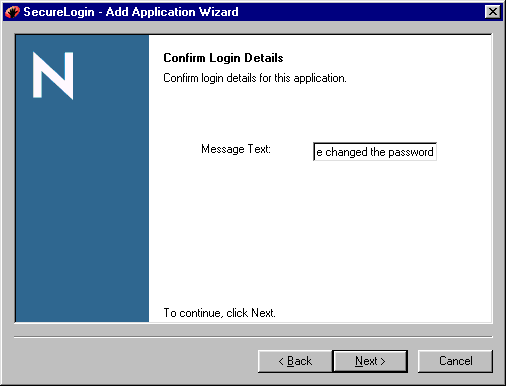
-
In the Name the Script dialog box, select the name that already exists for the application, then click Finish.
Modifying "Incorrect Password" Message Boxes
If an error occurs during login (for example, a credential is incorrect), SecureLogin displays an error message box. You can modify a script so that it responds to a login error message.
-
Display the application's login error message.
The following figure illustrates the error message box in Password Test.exe.

-
Right-click the SecureLogin icon on the task bar, then select Add Applications.
-
In the Welcome to SecureLogin dialog box, click Next.
-
Select Web Page or Windows Application (depending on your application), then click Next.
-
In the Set Up a Windows Application dialog box, drag the hand icon to the application's title bar (not to the error message box).
-
Select Change Password Successful Message, then click Next.
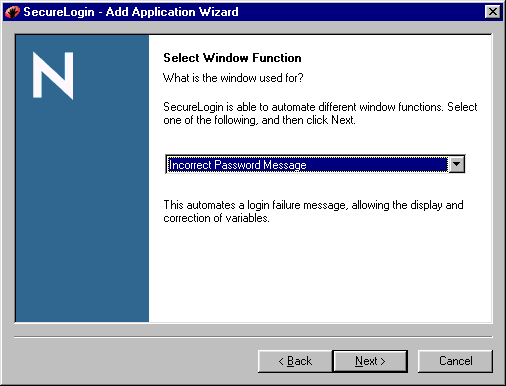
-
Drag the hand icons from the Wizard to the message text in the message box and to the OK button, then click Next.
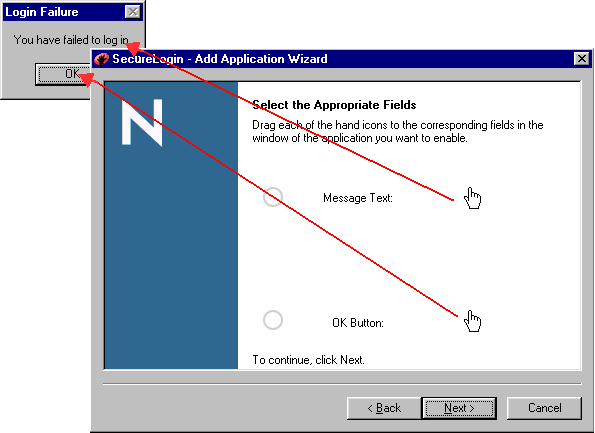
-
Modify the message by typing customized text in the Message Text edit box, then click Next.
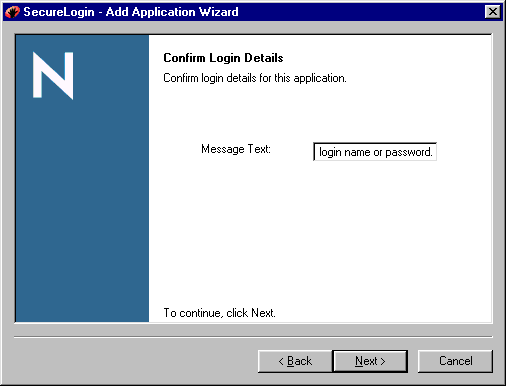
-
In the Name the Script dialog box, select the name that already exists for the application, then click Finish.
The next occurrence of an incorrect login displays a message box that has the changed text
An application might return one message for an incorrect username and a different message for an incorrect password. In such a case, handle both scenarios and display only the invalid credential by using the DisplayVariables command. See "DisplayVariables" in the Nsure SecureLogin 3.51.2 Scripting Guide.